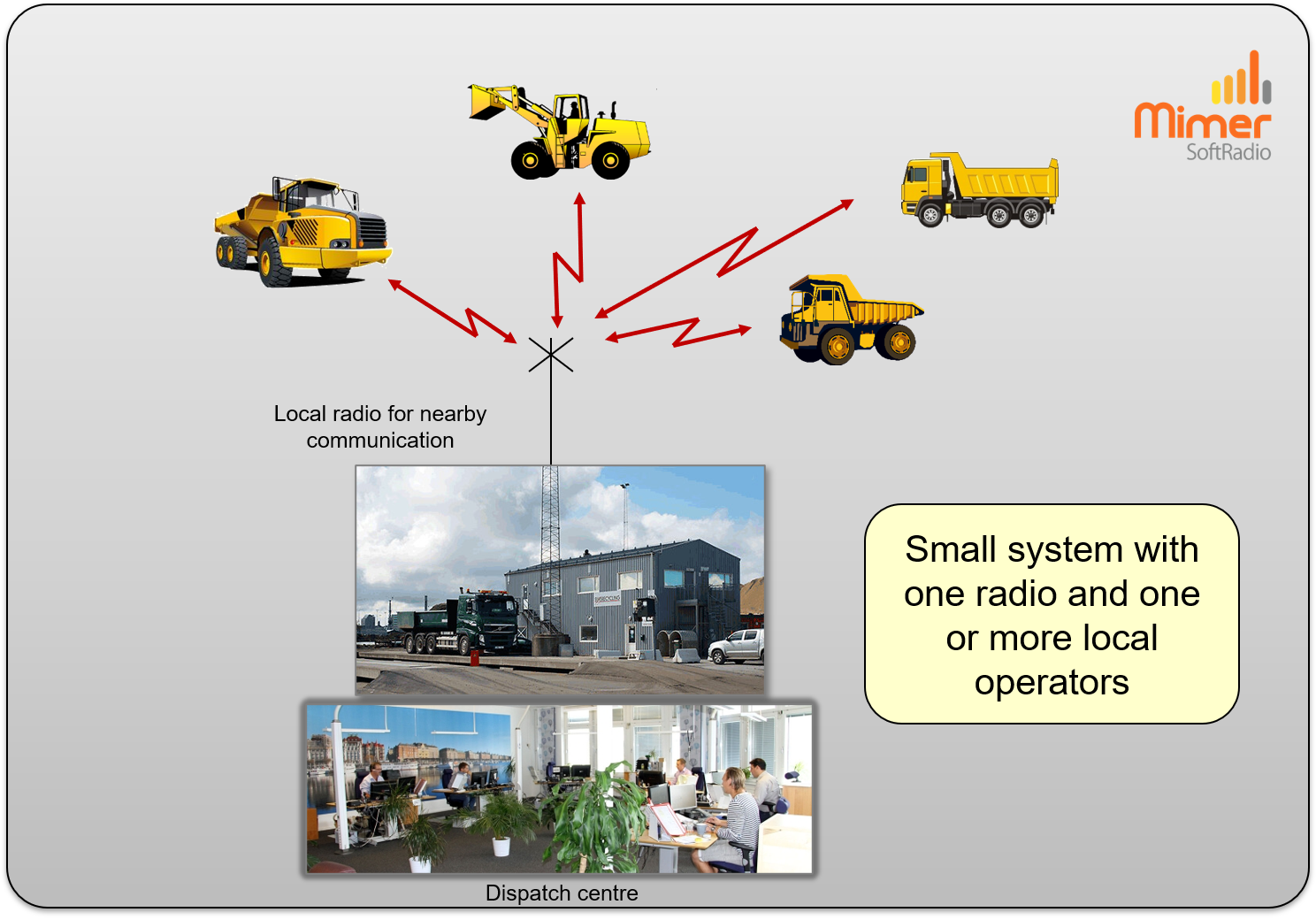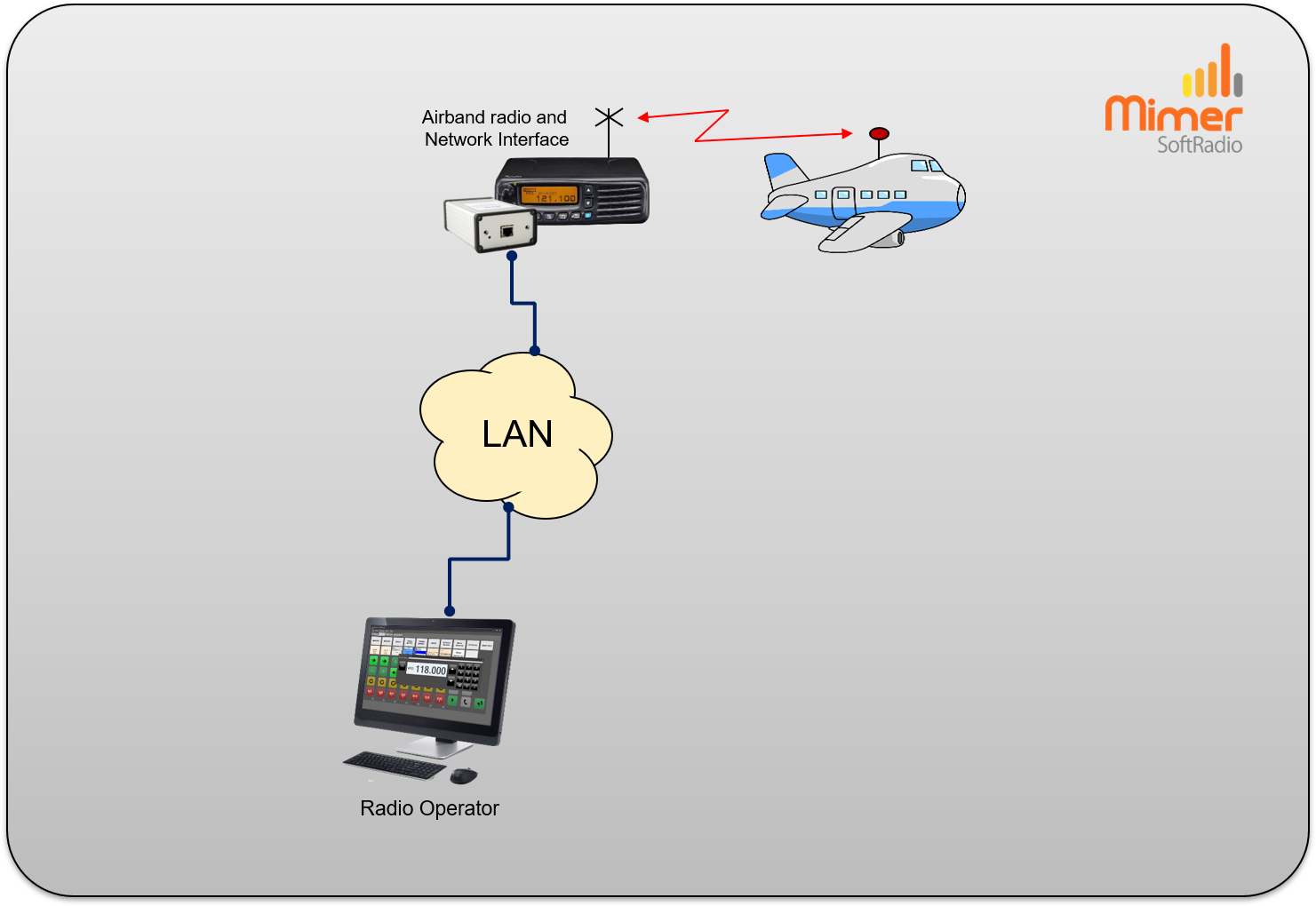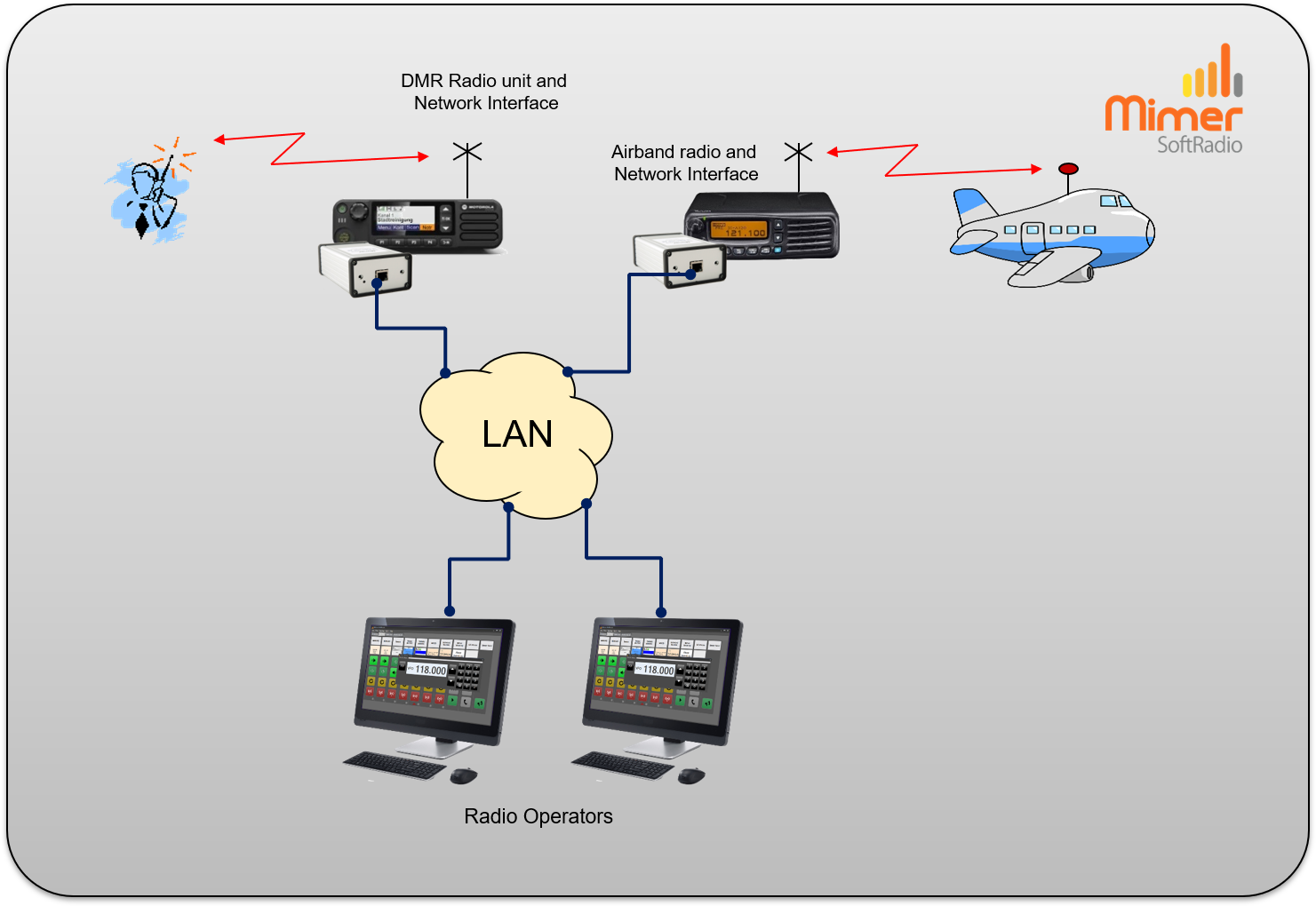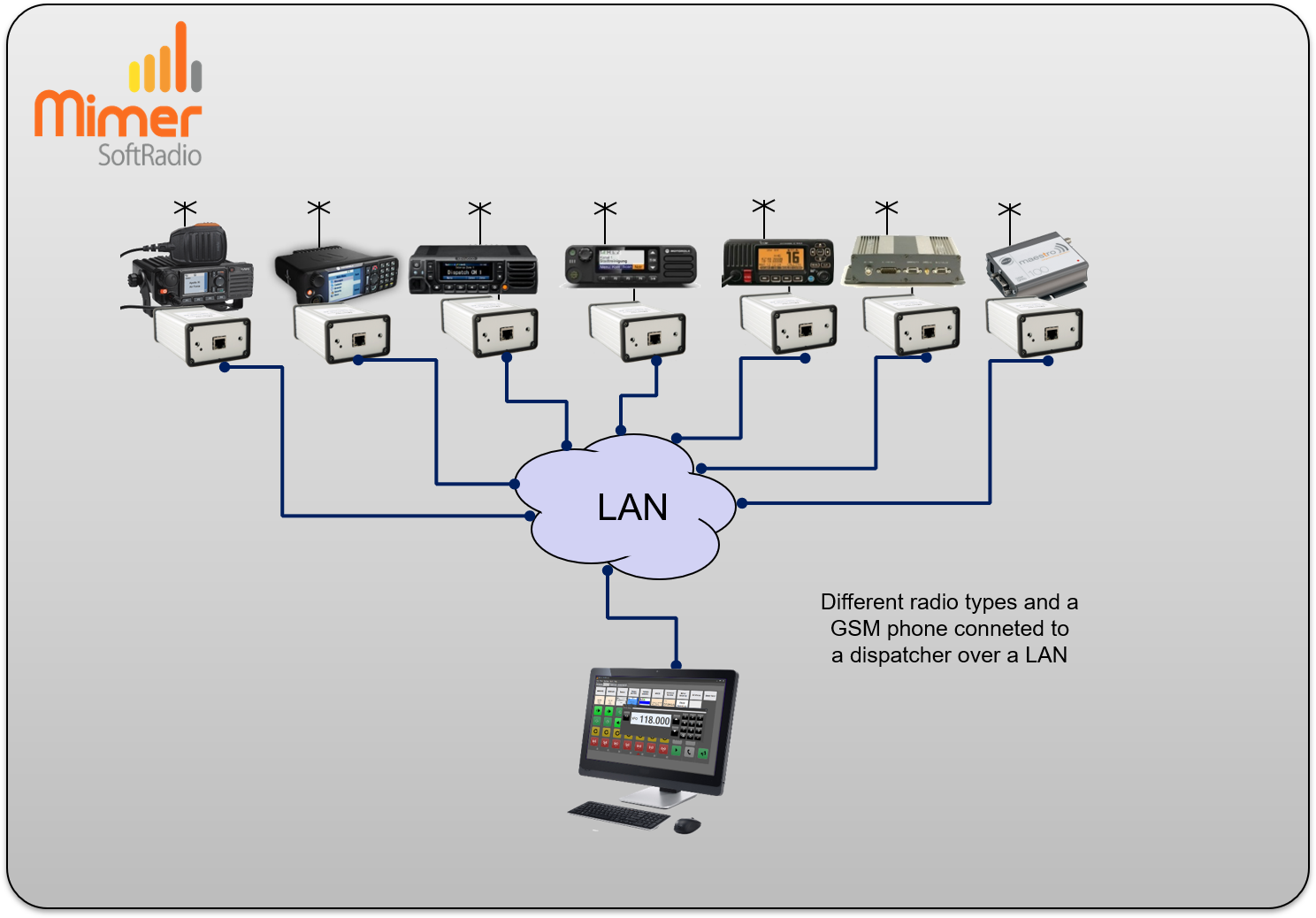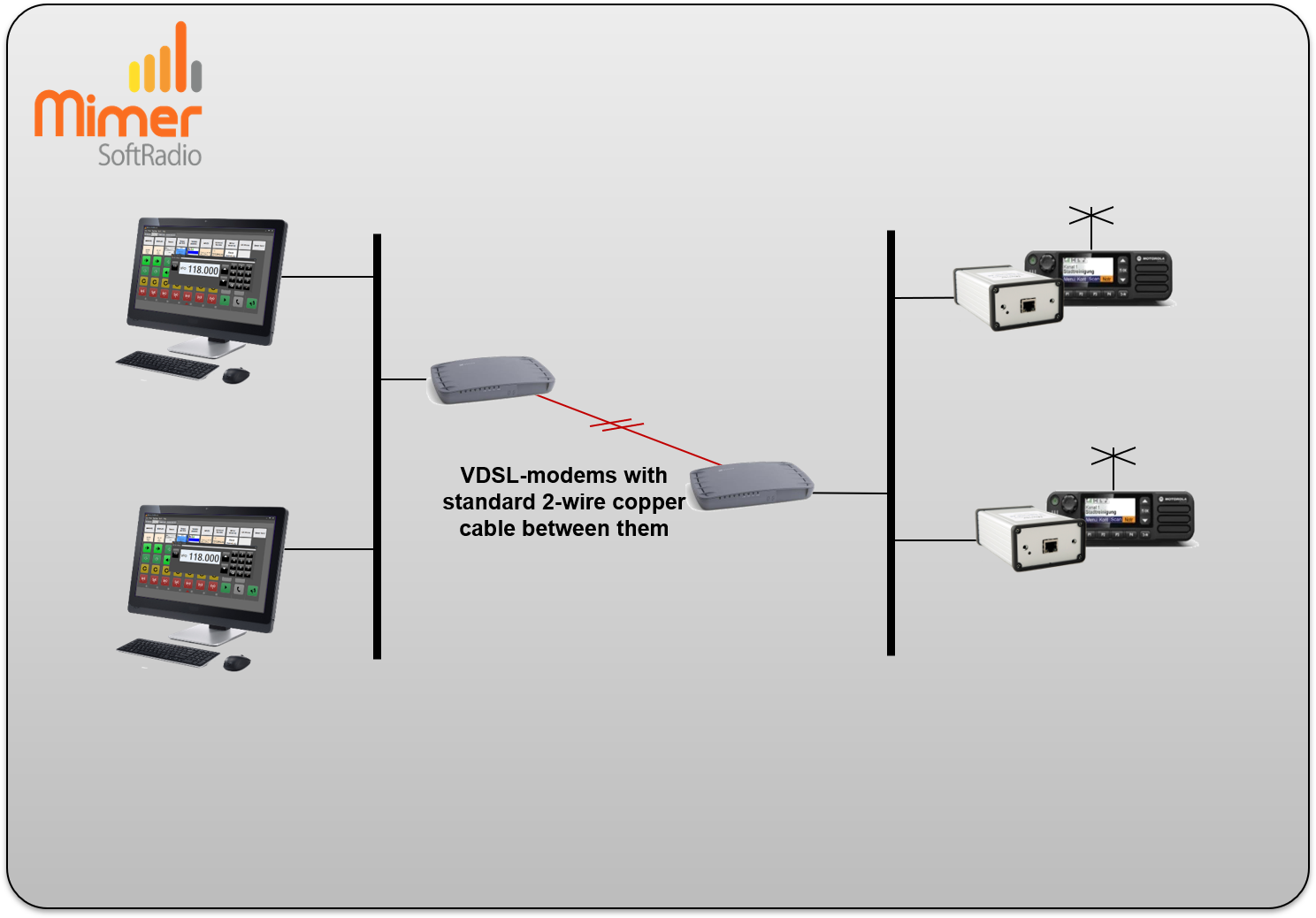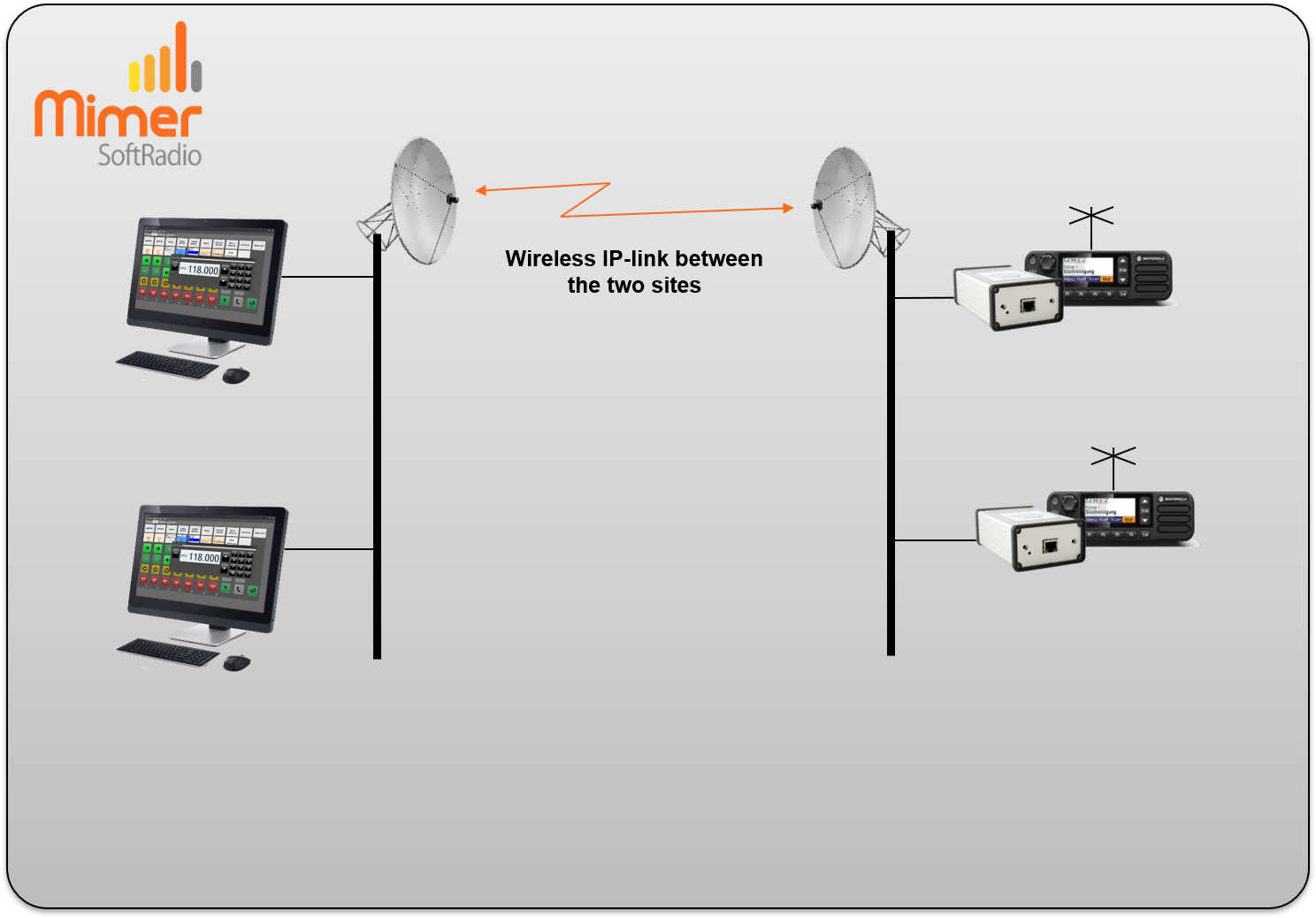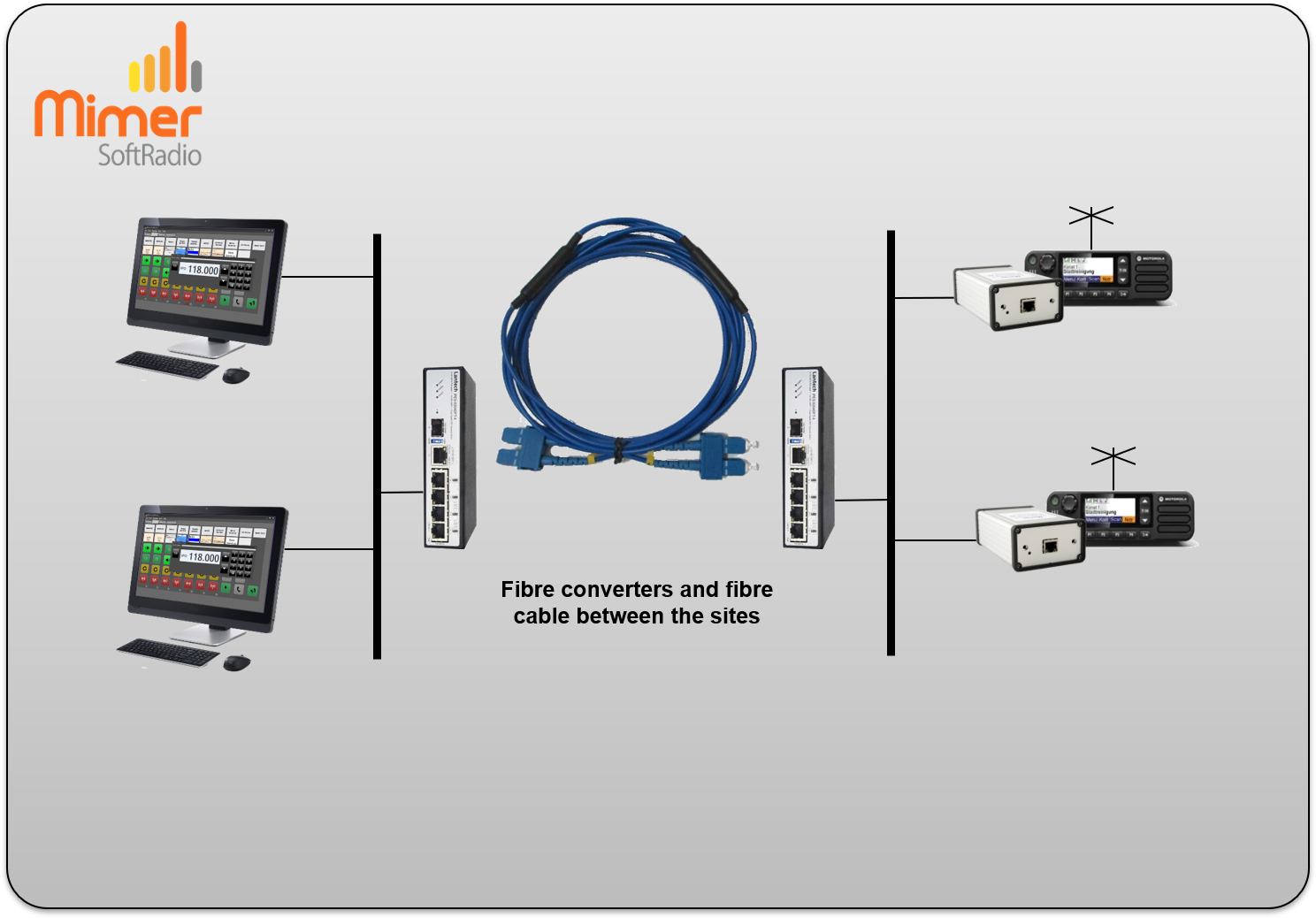Mimer SoftRadio - Small Systems
A SoftRadio system can be built in many sizes. Please also see the other pages with examples.
Operators can be local or remote, and also the radios can be local or remote, all in a mix. The radios does not need to be of the same brand or work in the same type of system, you can mix and match as you like. You can even mix with phones, intercoms and PA-systems into the system.
Below are a number of examples of systems in the smaller scale. All of them can be expanded at any time to any size needed.
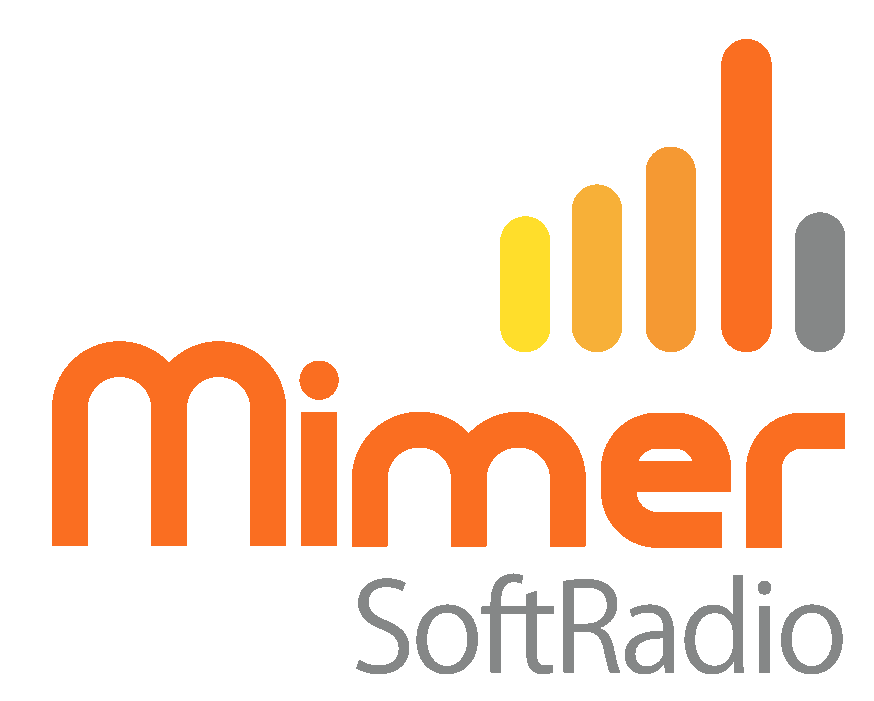
Following are some examples of how to build small systems
Basic local system over a LAN
The most basic system is one operator and one radio connected to each other over a LAN. This can be expanded without any extra equipment, just add radios and/or operators.
Maximum number of local computers to one radio is 99. And the PC client can handle 8 radios or in the large version up to 30 radios.
Basic remote system over the Internet
Each network interface can handle one operator over the Internet.
To be able to connect more than one operator a Mimer RadioServer is needed.
Read more here: Mimer RadioServer.
Basic System with mixed user connections
One radio can be controlled both locally (maximum 99 users) and through the Internet at the same time.
In the picture below the local radios rather short radio coverage is expanded through a radio repeater placed on a high position with good radio coverage. This is a common way to build the system. You don’t need an Internet connection at the antenna site and you can have many operators.
The operator over the Internet can for example be another dispatch central that takes over at night or it can be some one using the radio from his home.
Basic System with mixed radio types
Each operator can access up to eight radios (30 with SoftRadio XL). The radios can be of different types and brands in any mix.
In the example to the right you have a Tetra radio, a DMR radio and several other radios, plus a GSM phone modem. With the Mimer CrossPatch option you can also patch them together with each other.
Basic System when you have no standard IP infrastructure
If you need to connect several operators to radios and have only copper wire access, you can use VDSL-modems to extend your LAN. Or you can use a wireless IP-link.
Same setup works with fibre cable, by adding fibre converters at each end you can extend your LAN. Or if you have an environment where copper wires can´t be used for safety reasons. A fibre connection is the solution.
In all examples no extra servers are needed since the system nodes will all be in the same local subnet of the LAN.

